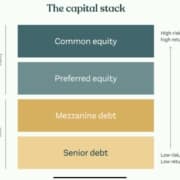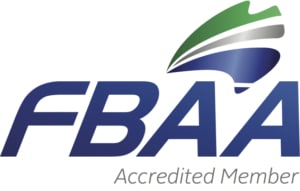Mezzanine vs Preferred Equity Financing
Written by David Lovato – CPC Development Lending Solutions
The key ingredient in any property development is finance. Sometimes, the best way to finance a project is with a traditional loan. At other times, the developer may need to take a more creative approach.
In that case, the developer could consider applying for mezzanine financing or preferred equity financing. But which one?
Mezzanine financing
Mezzanine financing is secondary financing.
For example, if Developer A takes out a loan from Lender B to develop a property and needs additional financing, Developer A can ask Lender B for additional funds in the form of mezzanine financing or ask Lender C for mezzanine financing.
Lender C can only grant mezzanine financing with Lender B’s permission. Once the project is complete, Lender B will be repaid first, then Lender C and then only Developer A.
If there are insufficient funds to repay Lender C, the agreement Lender C has with Developer A will determine what happens next:
- Lender C could take a share of Developer A’s project
- Lender C could claim the property or part of the property
- Lender C might book a loss, especially if Developer A is declared bankrupt and Lender B has claimed the property
Because Lender C’s position is risky, and subordinate to Lender B, mezzanine finance is often expensive and has strict borrowing conditions.
But there are several advantages:
- Mezzanine loans are at higher loan-to-value ratios, so developers can access extra funding
- Mezzanine loans may work out cheaper than forming a joint venture with another company to raise additional funds
- The developer has to put less of their own money into the project
- Repayments are often delayed until the end of the project, which helps with cash flow
Preferred equity financing
Another form of financing is preferred equity financing, which gives the lender an equity stake in the project, which usually involves a percentage of the project profits. With preferred equity, you surrender a stake in your project and give the lender a preferred pay-out position ranking ahead of the common equity shareholders.
In this scenario:
- Lender B provides a loan to Developer A on a fixed interest rate at an agreed LVR
- Preferred Equity Financier C loans funds that are secured against the borrowing entity in the form of a project shareholding (rather than a registered second mortgage)
- Preferred Equity Financier C is repaid a fixed rate or return and/or profit share at the end of the project ahead of Developer A
- Generally Lender B will count the preferred equity funding as if these funds were Developer A’s own funds, which will allow better terms to be negotiated with the senior lender
Which is better?
With preferred equity financing, the developer gives a share of the project to the lender. This means the lender also has a share in profits earned. This ownership also gives the lender the right to interfere with the running of the project and ability to ‘step in’ and take control if things don’t go as originally planned.
In contrast, a lender that offers mezzanine equity financing does not automatically receive a share of the project as mezzanine is regarded as secured debt. So the relationship is very clear: the lender receives their principal and agreed interest at the completion of the project.
But if the lender can’t get mezzanine financing, then preferred equity financing may be a good option. That’s because getting only a portion of the profits is still better than not getting the project off the ground and earning nothing.
Crowd Property Capital is a property development finance specialist. We help you structure and submit your finance applications to lenders across Australia, whether you need a conventional mortgage, mezzanine loan or preferred equity loan. Contact us at info@crowdpropertycapital.com.au or fill in this form.
















